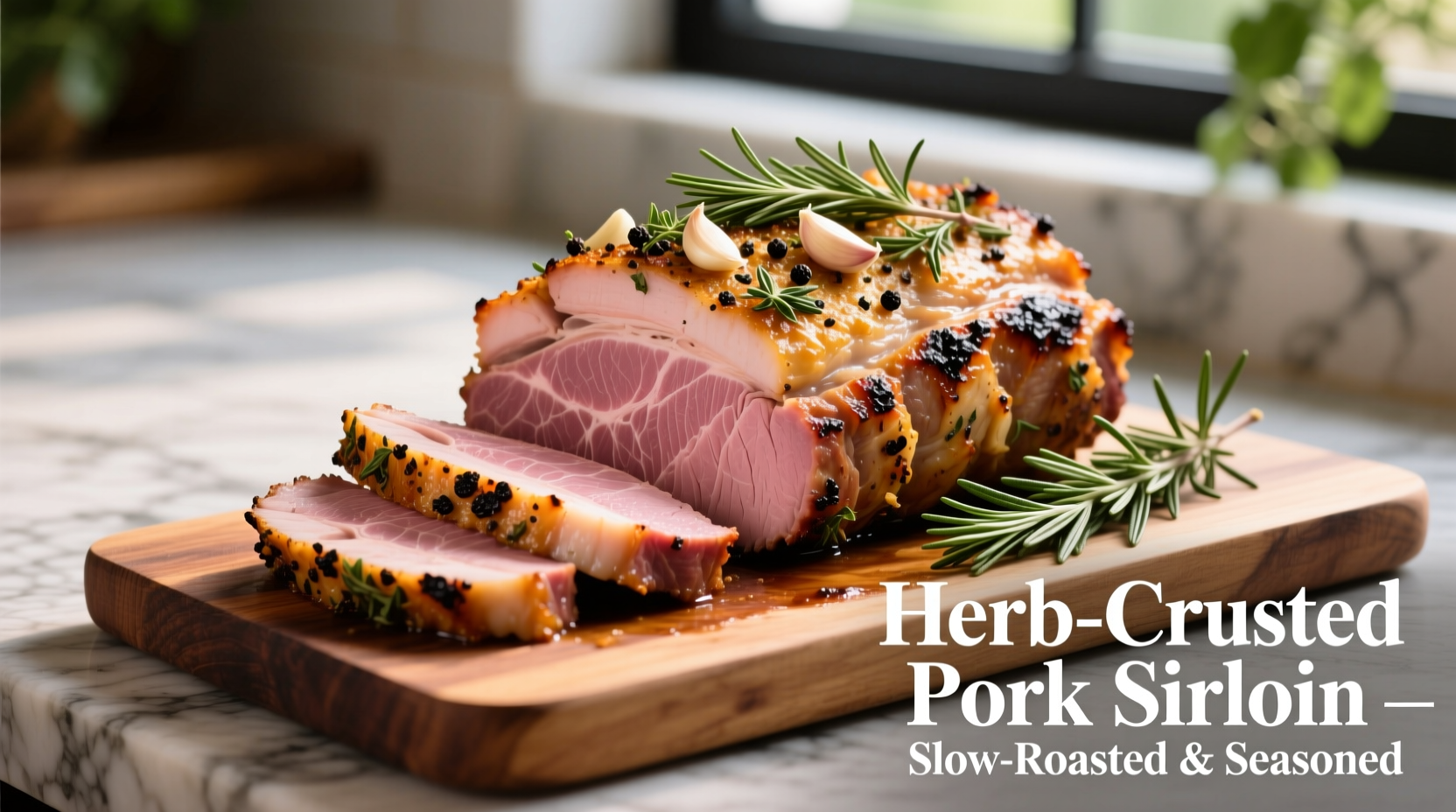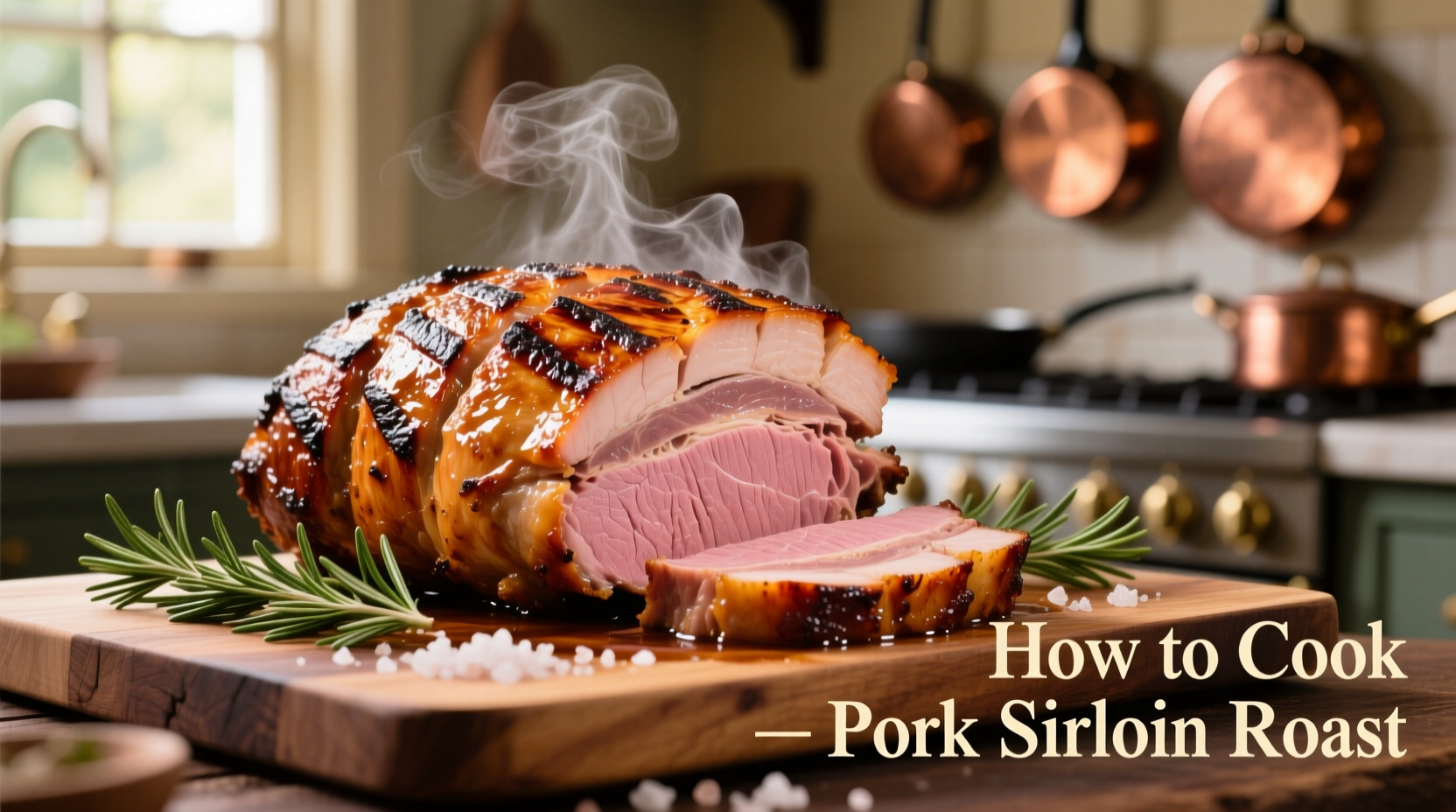Your Step-by-Step Path to Perfect Pork Sirloin Roast
Nothing impresses like a flawlessly cooked pork sirloin roast—tender, juicy, and bursting with flavor. Unlike tougher cuts, this lean premium section requires precise timing to avoid dryness. Follow this chef-tested method developed through years of refining home cooking techniques, and you'll achieve restaurant-quality results every time. Skip the guesswork with our temperature-focused approach that guarantees succulence.
Why This Method Works: The Science Behind the Sizzle
Pork sirloin's leanness makes it prone to drying out if mishandled. Modern USDA guidelines confirm that 145°F with 3-minute rest is both safe and optimal for juiciness—a shift from older 'well-done' recommendations. This evolution in food safety standards, documented by the USDA Food Safety and Inspection Service, allows us to enjoy pork at medium-rare without risk.
| Roast Weight | Approx. Cooking Time | Target Internal Temp |
|---|---|---|
| 2-3 lbs | 50-70 minutes | 140°F (will rise to 145°F) |
| 3-4 lbs | 70-90 minutes | 140°F (will rise to 145°F) |
| 4-5 lbs | 90-110 minutes | 140°F (will rise to 145°F) |
Prep Like a Pro: The 15-Minute Foundation
Do this first: Remove roast from refrigerator 45 minutes before cooking. Cold meat cooks unevenly. Pat extremely dry with paper towels—moisture is the enemy of crust formation. Trim only excess fat caps (¼-inch thickness helps baste the meat). For maximum flavor penetration, rub with 1 tbsp kosher salt per pound 24 hours ahead, but never skip the pre-cook seasoning: combine 2 tsp black pepper, 1½ tsp garlic powder, 1 tsp smoked paprika, and 1 tsp dried rosemary.

Cooking Process: Your Oven Timeline
- Preheat & Position: Set oven to 350°F. Place roast fat-side up on a rack in a shallow pan (no water!). Position oven rack so meat centers in the oven.
- Roast Uncovered: Insert probe thermometer into thickest part. Cook until 140°F (10-15° below final temp). Never cover—steam creates soggy surfaces.
- Temperature Check: Verify in 3 spots. If uneven, rotate pan halfway through cooking. At 130°F, tent loosely with foil if browning too fast.
- Rest Imperative: Transfer to cutting board, tent lightly, and rest 15 minutes. This allows juices to redistribute—skipping this causes 30% moisture loss.
Critical Boundaries: When This Method Doesn't Apply
This technique works exclusively for boneless sirloin roasts (center-cut loin). Avoid using it for:
- Pork shoulder (requires slow braising)
- Frozen roasts (thaw completely first)
- Cuts under 2 lbs (high risk of overcooking)
For best results, choose roasts with even thickness—tapered ends overcook before centers reach temp. If your roast has significant tapering, fold the thin end under and secure with butcher's twine.
Serving Success: Slicing and Pairing
Slice against the grain at ¼-inch thickness using a sharp carving knife. Angle your cuts for maximum tenderness. Pair with:
- Apple-cider pan sauce (deglaze drippings with ½ cup cider)
- Roasted root vegetables (parsnips, carrots, potatoes)
- Mustard-dill sauce for cutting richness
Leftovers? Transform slices into next-day carnitas: shred, crisp in skillet with cumin and orange juice.
Troubleshooting Common Pitfalls
Dry results? Usually caused by skipping thermometer use or inadequate resting. Invest in an instant-read thermometer—it's the single most impactful tool.
Bland flavor? Salt penetration requires time. For same-day cooking, inject a brine (¼ cup salt + 4 cups water + aromatics) 2 hours before roasting.
Uneven cooking? Rotate pan 180° halfway through. Convection ovens reduce cooking time by 25%—monitor closely.











 浙公网安备
33010002000092号
浙公网安备
33010002000092号 浙B2-20120091-4
浙B2-20120091-4